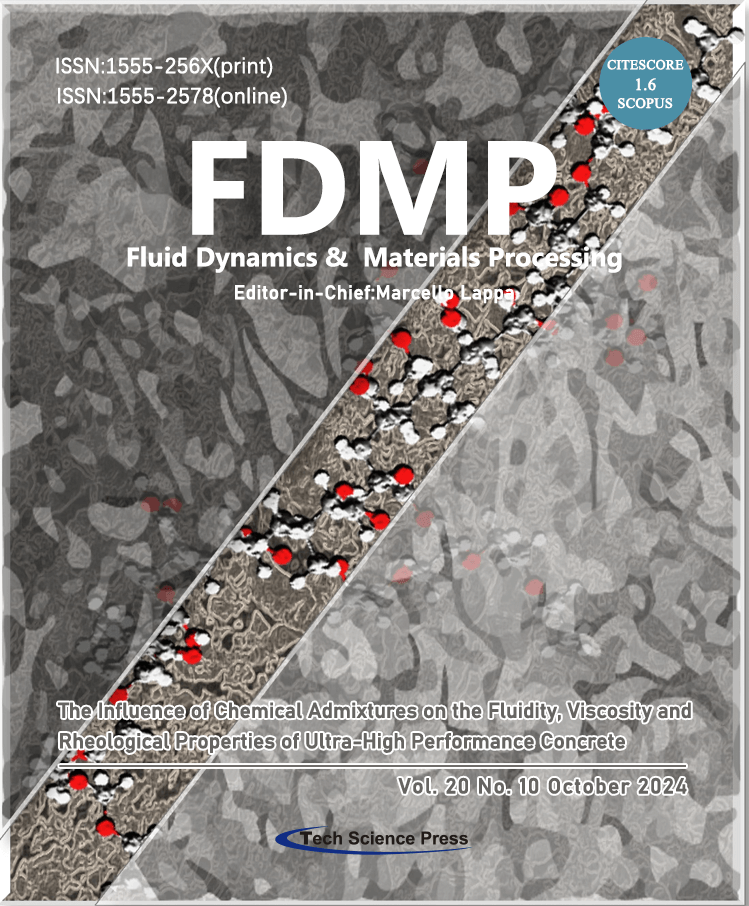The Influence of Chemical Admixtures on the Fluidity, Viscosity and Rheological Properties of Ultra-High Performance Concrete
Jin Yang1,2, Hailong Zhao1, Jingyi Zeng1, Ying Su1,2, Mengdi Zhu1, Xingyang He1,2,*
FDMP-Fluid Dynamics & Materials Processing, Vol.20, No.10, pp. 2163-2181, 2024, DOI:10.32604/fdmp.2024.055448
- 23 September 2024
Abstract To achieve higher strength and better durability, ultra-high performance concrete (UHPC) typically employs a relatively small water-binder ratio. However, this generally leads to an undesired increase in the paste viscosity. In this study, the effects of liquid and powder polycarboxylate superplasticizers (PCE) on UHPC are compared and critically discussed. Moreover, the following influential factors are considered: air-entraining agents (AE), slump retaining agents (SA), and defoaming agents (DF) and the resulting flow characteristics, mechanical properties, and hydration properties are evaluated assuming UHPC containing 8‰ powder PCE (PCE-based UHPC). It is found that the spread diameter of… More >
